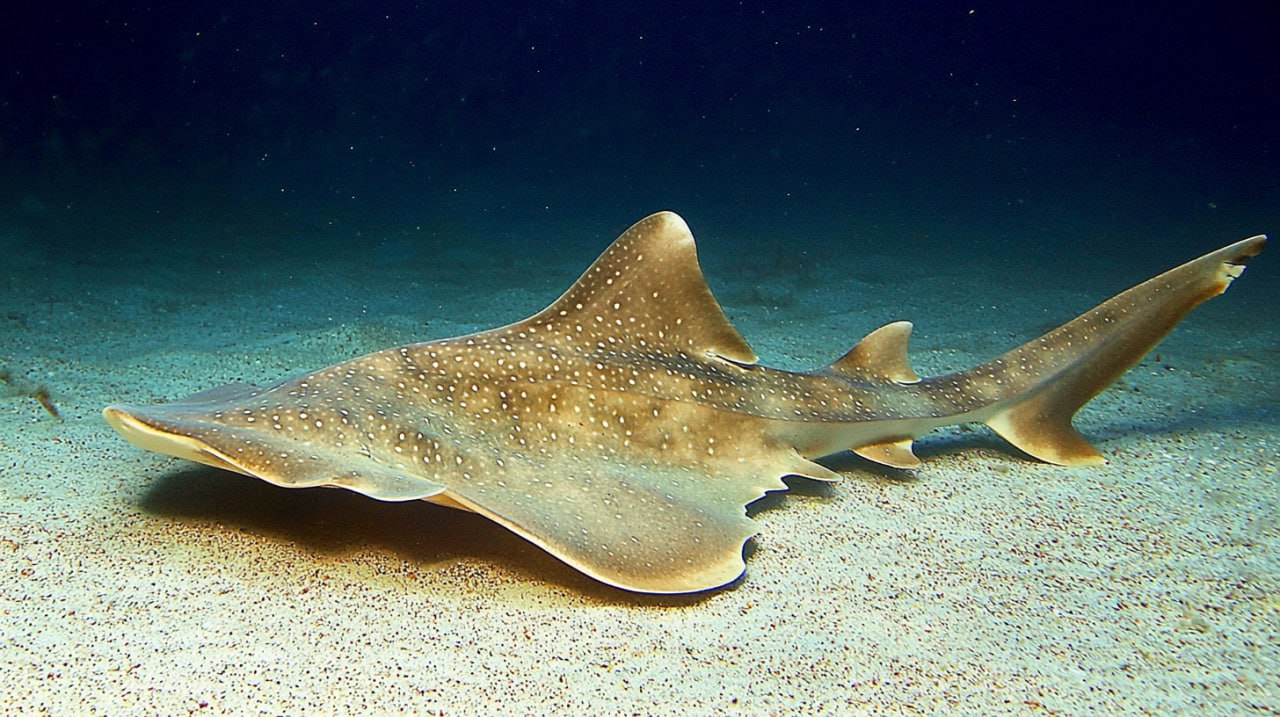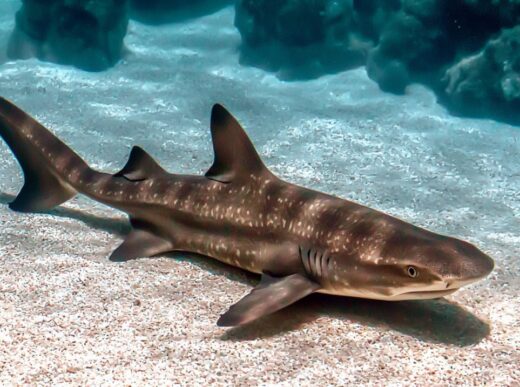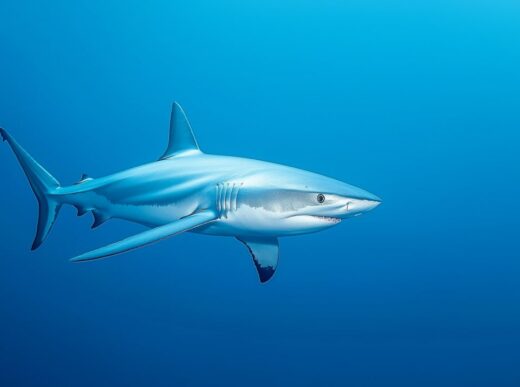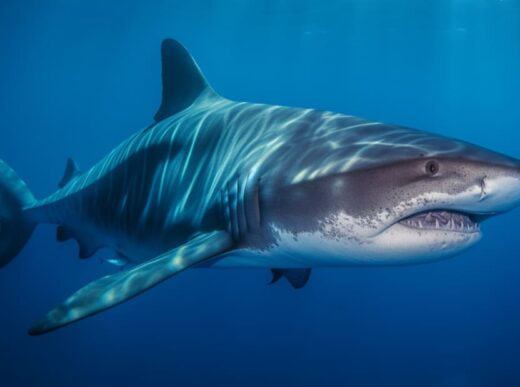Dive into the mysterious depths of the ocean with us as we uncover the captivating world of the angel shark! This unique creature, resembling a stingray, prefers to dwell on the ocean floor. We’ve compiled 20 intriguing facts that will introduce you to the angel shark like never before.
20 Amazing Facts About Angel Sharks
Strap in for an exciting plunge into the enchanting domain of sharks, where they rule the underwater realm with magnificence!
Characteristics
1. Brace yourself for some ancient history – these sharks are some of the oldest creatures swimming in our seas, dating back a staggering 150 million years!
2. Let’s start with a fascinating fact: the genus Squatina, home to angel sharks, boasts a whopping 23 species. While they may not look vastly different from one another, they do have diverse habitats. From European to American, Mexican to Australian, and even Taiwanese waters, angel sharks have quite the global presence.
3. Now, here’s a tidbit for the science buffs: researchers dub this shark genus Squatina, which intriguingly translates to «Scato Shark.»
4. Picture this: angel sharks bear a striking resemblance to stingrays, earning them their celestial moniker. With their wide, flat lateral fins that mimic the wings of stingrays, it’s no wonder they share the name. But here’s the kicker – they still sport that classic shark tail and body.
5. Now, let’s talk fashion – or rather, camouflage. Depending on where they call home, angel sharks rock different hues. Take the European sea angel, for instance, sporting a brownish tone, while its Aussie cousin flaunts a fetching dirty yellow.
6. Size-wise, angel sharks are on the smaller end of the shark spectrum. They typically measure around 1.5 meters in length and tip the scales at a modest 30 kilograms. Of course, there are some big boys out there, stretching up to 2.4 meters long and weighing a hefty 70 kilograms.
7. Here’s where it gets truly intriguing – angel sharks often suffer from spine diseases akin to those found in humans. Think kyphosis, scoliosis, lordosis, and the like. While we humans might blame our upright posture, angel sharks chalk it up to diet, stress, and the occasional rough encounter.
Habitats
8. Angel sharks are true globetrotters, making appearances in oceans worldwide, except for the chilly Arctic waters. But if you’re looking to catch a glimpse of these majestic creatures in their element, head on over to the European and Australian coastlines, where you’ll find some of the largest angel shark populations congregating.
Lifestyle
9. Angel sharks have a penchant for the shallows, often lingering in coastal waters near continents and islands, where the depths range from 20 to 25 meters. While they typically steer clear of deeper waters beyond 150 meters, some species have been known to take a plunge as deep as 1.5 kilometers.
10. These stealthy predators are creatures of the night, preferring to burrow into the sandy seabed during daylight hours. With a knack for ambush hunting, angel sharks lie in wait amidst the silt, patiently biding their time until unsuspecting prey comes into view. When the moment is ripe, they swiftly pounce on their target, securing their next meal with precision.
Eating Habits
11. Living close to the seabed, the angel shark’s dining options are somewhat limited. Its menu typically includes benthic fish, crustaceans, and mollusks.
12. Equipped with a unique jaw structure, the angel shark is well-equipped for its hunting endeavors. Its jaws possess remarkable flexibility, allowing them to extend and ensnare prey with ease. Lined with sharp, needle-like teeth, these jaws make quick work of piercing and subduing unsuspecting victims, leaving them with little chance of escape.
Intelligence and Social Behavior
13. Angel sharks are solitary creatures, each staking out its own territory for hunting. Within these territories, larger sharks assert dominance, keeping smaller competitors at bay.
Reproduction
14. Surprisingly, despite their small size, angel sharks are egg-laying creatures! Their pups hatch from eggs and develop inside the mother’s womb for a period of time.
15. The gestation period for angel sharks lasts between 8 to 10 months. A typical litter consists of 6 to 20 pups, each measuring about 20 to 30 centimetres in length.
Population
16. Sadly, nearly all species of angel sharks are considered endangered, with dwindling populations. Scientists fear that angel sharks are teetering on the brink of extinction.
Danger To Humans
17. Angel sharks don’t pose any threat to humans, mainly due to their small size and bottom-dwelling habits. However, if accidentally stepped on while buried in the mud, they can inflict serious injuries in self-defense—an understandable reaction!
18. Unfortunately, humans are the primary threat to these sharks’ survival. Angel sharks have been extensively hunted for their meat, fatty livers, and skin. Despite protective measures like fishing regulations, their slow reproductive rate means their populations continue to decline.
Are There Any Aquariums with Angel Sharks?
19. Unfortunately, encountering an angel shark in its natural habitat is quite rare. These creatures spend most of their daylight hours buried in the sandy seafloor, sporting a camouflage that helps them blend in seamlessly. Their dwindling numbers add to the challenge of spotting them in the wild.
20. Angel sharks are also being showcased in oceanariums, offering enthusiasts a chance to marvel at these fascinating creatures up close. Scientists, particularly ichthyologists from Scotland, have been dedicated to studying and restoring angel shark populations, shedding light on their behavior and biology while working towards their conservation.
Here are a few aquariums that may have featured Angel sharks:
- Oceanário de Lisboa (Lisbon Oceanarium), Portugal:
- Location: Esplanada Dom Carlos I, s/nº, 1990-005 Lisboa, Portugal
- Website:Oceanário de Lisboa
- Galway Atlantaquaria, Ireland:
- Location: Seapoint Promenade, Salthill, Galway, Ireland
- Website:Galway Atlantaquaria
- Aquarium of the Bay, San Francisco, USA:
- Location: Pier 39, The Embarcadero & Beach Street, San Francisco, California, USA
- Website:Aquarium of the Bay
- Cretaquarium, Greece:
- Location: Thalassokosmos, Gournes, Heraklion, Crete, Greece
- Website:Cretaquarium
These aquariums provide opportunities to learn about marine life from various regions and may have exhibits featuring angel sharks. Please note that the availability of angel sharks in aquariums may vary, so it’s a good idea to check with the specific aquarium for the most up-to-date information on their exhibits.




